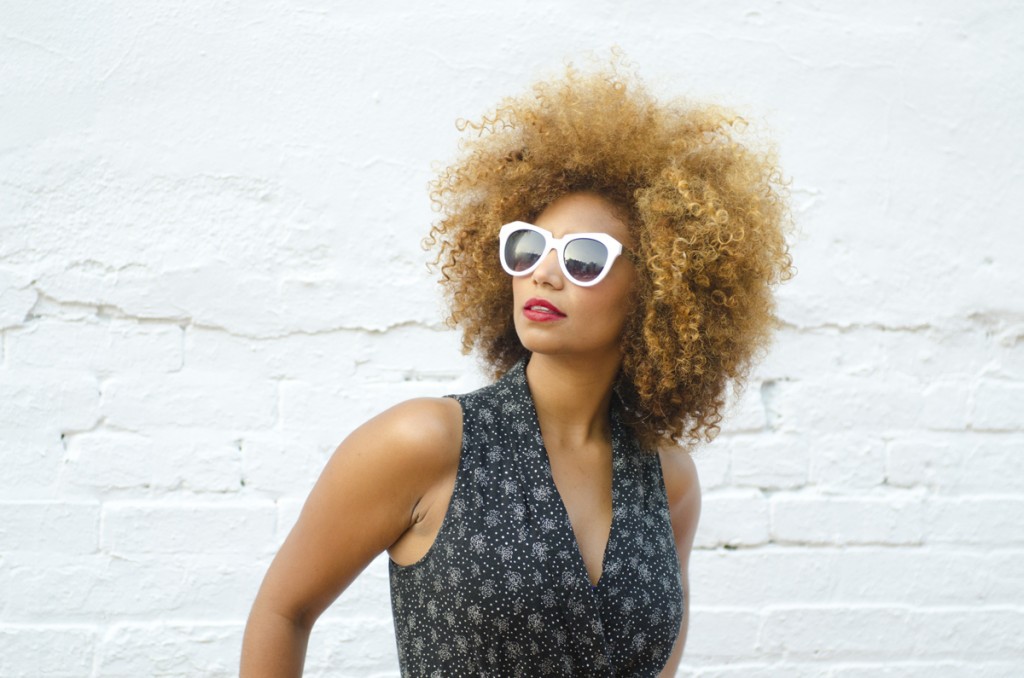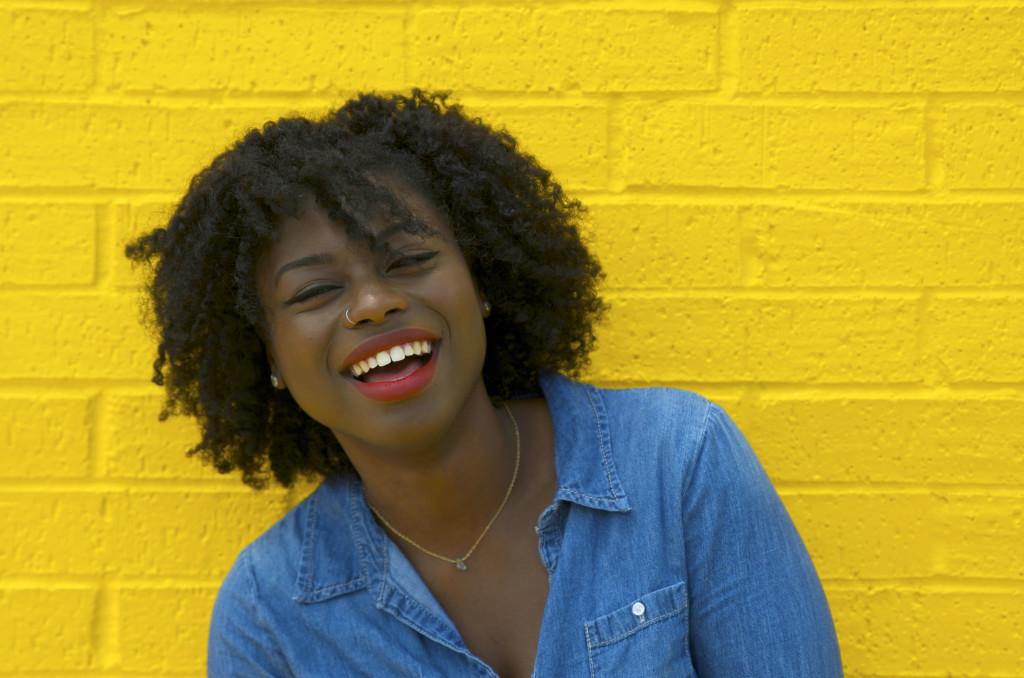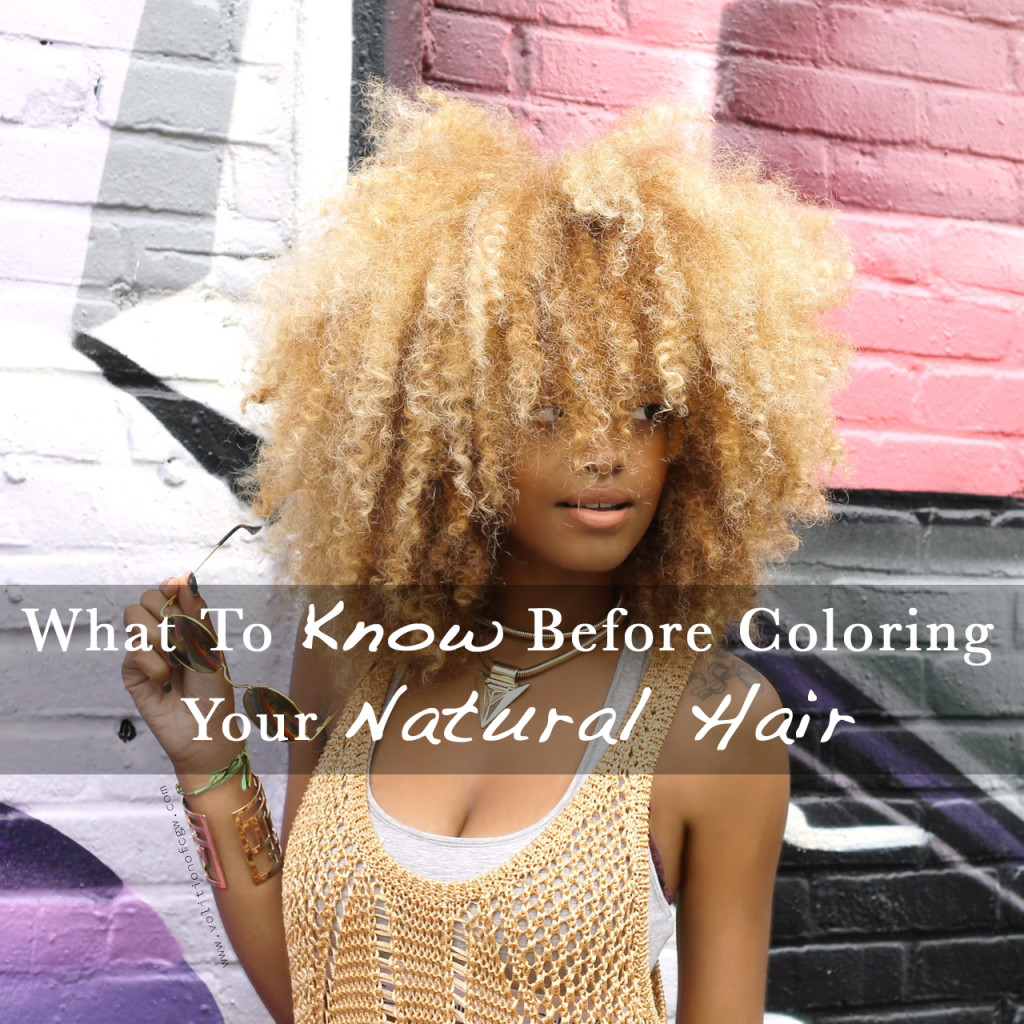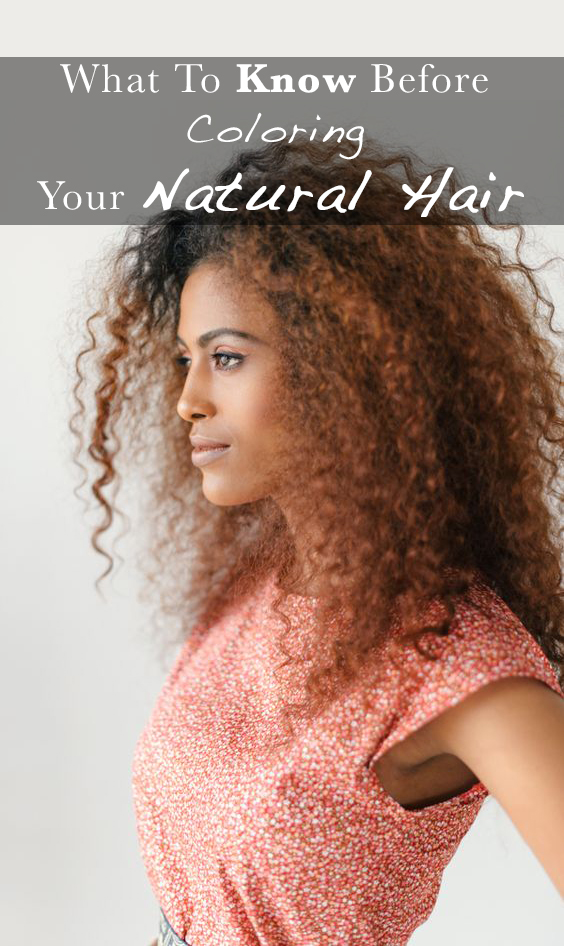
 Have you thought about coloring your natural hair? Have you been hesitant to do so because you’ve been pondering up so many questions pertaining to hair color and maintaining the proper health of your stands once they’re colored? Getting your hair colored can be quite intimidating, especially for newbies. No one wants to leave the hair salon with regret about their decision or upset that their dream hair color turned out less than perfect. Luckily for you guys, we’ve put together a list of 7 of the most frequently asked questions pertaining to women who are in the process of getting their hair colored. The answers to these most commonly asked questions will make your before and after process a whole lot easier. There’s no one better to consult with than hair color expert Gabrielle Henderson of Fro-lanthropy. This skillful stylist specializes in safe hair coloring techniques while maintaining the utmost health and moisture of all-natural hair textures.
Have you thought about coloring your natural hair? Have you been hesitant to do so because you’ve been pondering up so many questions pertaining to hair color and maintaining the proper health of your stands once they’re colored? Getting your hair colored can be quite intimidating, especially for newbies. No one wants to leave the hair salon with regret about their decision or upset that their dream hair color turned out less than perfect. Luckily for you guys, we’ve put together a list of 7 of the most frequently asked questions pertaining to women who are in the process of getting their hair colored. The answers to these most commonly asked questions will make your before and after process a whole lot easier. There’s no one better to consult with than hair color expert Gabrielle Henderson of Fro-lanthropy. This skillful stylist specializes in safe hair coloring techniques while maintaining the utmost health and moisture of all-natural hair textures.
Related Content: Dying Natural Hair From Black To Blonde [CLICK TO WATCH]
1. Are home dye kits safe for me to use?
From my experience, I would not recommend home dye kits. They are typically manufactured overseas, where there are no FDA laws. At-home dye kits are filled with metallic dyes, which over time cause the hair to become dull, dry, and eventually snap.
2. Will I experience any curl pattern changes?
It is typical that after an intense session, going more than 7 levels lighter, your hair will go into shock. This means after shampooing your hair for the first time since being colored, you will notice a slight change in your curl pattern. This is normal, rare, but normal. I always tell my clients to soak their hair with water and apply their favorite deep conditioner, cover it in a plastic cap, and leave it in for about an hour. The next time they shampoo their curls will snap right back as if they never left.
Please note: I said a SLIGHT change in curl pattern, your colorist should never allow your hair to be processed so much to where you completely lose your curls.
Related Content: COMPLETE List Of Black-Owned Natural Hair Wigs! [CLICK TO READ]
3. Should I have my hair bleached? If so, will it damage my hair?
This is a question I receive the most. Yes, your hair can be damaged if it is improperly lifted, meaning, not taking the necessary precautions to ensure you keep the health of your hair. This is why I recommend staying away from home dye kits and always going to a professional when coloring your hair.
4. What are some helpful tips to assist me in finding a great hair colorist for natural hair?
Do your research. Find someone who specializes in your specific texture, whether it be straight, wavy, or curly. Make sure you see their previous work. Portfolios are very important. Also, paying attention to reviews and talking to previous clients. Sometimes Instagram can be smoke and mirrors.
Booking a Consultation. You want to make sure you build some sort of relationship with the stylist to ensure you are all on the same page. This is the time to ask any and every question about the service you would like, where they received their training, and how up-to-date they are with the latest trends. If the stylist grows impatient or irritable, they probably aren’t a good fit. It’s your hair and you should feel comfortable no matter what service you are getting.
Listen to their terminology. Listening to how a stylist explains certain techniques will give you insight into if they know what they’re doing. (Ex: calling Highlights “streaks” run..run..run)
Related Content: Highest Rated Natural Hair Products On Amazon [CLICK HERE]
5. How do I prevent hair breakage?
Moisture is key! I recommend before going into your appointment to not shampoo your hair. The natural oils in your hair will protect it during the dyeing process. I recommend coating your strands with coconut oil as extra insurance the night before your appointment.
6. Can you explain the different types of hair-dying techniques that I can choose from and how will I know which one is right for me?
There are literally a ton of hair-dyeing techniques out there. I see new things popping up literally every day, but we’ll stick to the basics for now.
Balayage: Balayage is a technique where the highlights are hand-painted. It literally means “to sweep” in French. Balayage is a great option for clients with virgin hair who prefer a natural-looking contrast. This technique gives more of a sun-kissed look to the strands, and the grow-out is seamless. Usually, last up to 6 months.
Traditional foil highlights: This is a technique in which a subsection of hair is weaved and placed into a foil. This is for the client who likes more of an “all-over blonde” and is typically used in color corrections. The grow-out is more noticeable and typically has to be touched up every 6-8 weeks.
Ombre: Great technique for more of a dramatic contrast from dark to light. It is usually darker at the root and lighter towards the ends. Ombre gives a grown-out look and works with any hair type and hair color.
7. What are some helpful tips to adhere to when caring for my colored-treated hair?
MOISTURE MOISTURE MOISTURE: As I stated above, moisture is key. Natural hair typically lacks moisture, so you want to make sure you’re consistent with keeping it moisturized post-coloring.
Using sulfate-free shampoos: Staying away from shampoos containing sulfates that strip your hair is recommended. Using a sulfate-free shampoo will also help prevent your color from fading so quickly.
Frequently deep conditioning your hair: I would recommend deep conditioning color-treated hair weekly, as opposed to bi-weekly.
Avoiding the silicone Dimethicone: Dimethicone is a non-water soluble silicone, meaning it blocks oils and ingredients from penetrating the hair shaft and causes build-up, commonly found in regular and deep conditioners. Needless to say, dimethicone completely destroys color-treated hair. You want to stick to water-soluble silicones, which won’t cause build-up and will prevent your hair from becoming dull and dry.
In addition to the above tips, providing your stylist with pictures and visual ideas will also aid in ensuring the coloring process runs smoothly and is a success. It seems like a lot of information, but dyeing your hair can be a fun experience. It’s all about experimenting, having fun, and trusting the process!
Featured Image Credit: Rene Daniella
What colors are you guys thinking about dyeing your hair for the summer?
Join us in our efforts of uplifting and unifying black women throughout the diaspora by sharing and commenting on this story below! Ask your friends to do the same.
Pinnable Images!!!


1 Comment